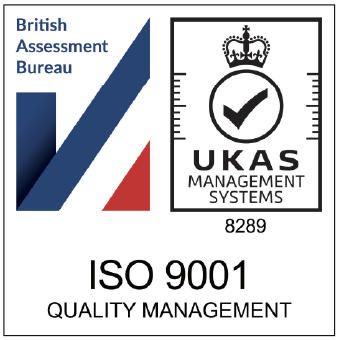When a customer places an order on your eCommerce site, they expect the item to be in stock and landing on their doorstep as soon as possible. But how can you plan so that you always have stock, that your suppliers are able to deliver, and that you won’t be impacted by manufacturing delays or fluctuations in customer demand? By using the following supply chain forecasting methods, that’s how!
What is supply chain forecasting?
Put simply, supply chain forecasting is the use of data, research and feedback to make predictions regarding all aspects of your supply chain.
Supply chain forecasting can cover areas as disparate as production lead time, shipping times, warehouse availability and storage costs, customer demand, staffing and more.
Why is supply chain forecasting important?
The best way of thinking about the importance of supply chain forecasting, is to understand what happens if you don’t do it.
Failure to undertake accurate supply chain forecasting can first and foremost have a negative impact on your profitability. But it can also have a series of secondary and tertiary impacts such as running out of inventory, too much inventory, poor customer service, increased shipping fees and much more.
Supply chain forecasting helps you to avoid these problems and maintain a profitable, effective eCommerce business.
What types of data are used in supply chain forecasting?
Whilst there are hundreds, potentially even thousands of different data points that can be used in supply chain forecasting, these data points can generally be classified as one of two types of data; quantitative or qualitative.
So, what’s the difference between the two types of data?
Quantitative data
Quantitative data involves, as the name suggests, quantifiable things such as past sales numbers, production lead times from previous seasons and other types of ‘hard’ data.
Quantitative data can be used to formulate quantitative forecasts. Quantitative forecasts are made on the basis that the future will largely mimic the past, so historical data can be used to reliably predict what will happen with your supply chain in the future.
Qualitative data
Qualitative data involves intangible things like anecdotal feedback, surveys, interviews and other types of data that aren’t underpinned by hard facts and figures.
When people make predictions based on a ‘gut feel’ or on the basis of anecdotal feedback, they are making qualitative forecasts. Qualitative forecasts are typically made when there isn’t any historical, quantitative data to fall back on. So, things like new product launches will typically be based on qualitative forecasts.

Quantitative supply chain forecasting methods
Now that we’ve explored what supply chain forecasting is, why it’s important, and the two core types of data that are used in forecasting, let’s take a look at the most popular types of quantitative supply chain forecasting methods.
In this section, we’ll take a look at the following quantitative supply chain forecasting methods:
- Exponential smoothing.
- Moving average forecasting.
- Multiple aggregation prediction algorithm.
- Auto-regressive integrated moving average.
Exponential smoothing
Exponential smoothing is a form of quantitative forecasting that not only uses historical data, but also takes into account recent observations too (hence the ‘smoothing’ part of its name).
Exponential smoothing produces forecasts that use historical data, but the prediction gives more weight to more recent data. The idea is that you’ll end up with a forecast that is more relevant as it treats newer data as more important than older data.
Forecasting experts Rob J Hyndman and George Athanasopoulos describe exponential smoothing in the following way:
“Forecasts produced using exponential smoothing methods are weighted averages of past observations, with the weights decaying exponentially as the observations get older. In other words, the more recent the observation the higher the associated weight.”
Moving average forecasting
Moving average forecasting is one of the simplest forms of quantitative forecasting.
Moving average forecasting uses an average series of subsets from complete data to identify an overall trend. In an eCommerce setting, a moving average forecast can help you identify whether a piece of inventory is selling more or less over time for example.
However, because a moving average forecast uses an average, it doesn’t lend any additional weight to more recent data (which may be a better indicator of the future). A moving average forecast also doesn’t take into account seasonality or trends – important things for eCommerce retailers.
Tip – moving average forecasting is better suited to slower moving, low-volume items of inventory.
Multiple aggregation prediction algorithm
The multiple aggregation prediction algorithm is a relatively new forecasting method which has been designed primarily to take into account seasonality. The multiple aggregation prediction algorithm also deliberately smooths out trends to prevent you from over or underestimating demand (in other words, you get a clearer long-term picture of demand).
Unfortunately, as this is a relatively new forecasting method, it is still largely unproven in the ‘real world’ and may be difficult to deploy in an eCommerce context.
Auto-regressive integrated moving average
Held up as one of the most accurate quantitative forecasting methods, the auto-regressive integrated moving average is also one of the most complex, time-consuming and costly forms of supply chain forecasting.
An auto-regressive integrated moving average uses time series data to predict future trends. Within the predictive model, the time series data is ‘smoothed’ using lagged moving averages.
Because this forecasting method is autoregressive (i.e. it implicitly assumes that the future will resemble the past), it should only be used for forecasting over short time periods. Over longer time periods, market or financial fluctuations can render an auto-regressive integrated moving average prediction false.

Qualitative supply chain forecasting methods
With quantitative forecasting methods out of the way, we’re now into the realm of the qualitative…
As we stated earlier, qualitative forecasts are ideal if you find yourself in a situation where you have little or no historical data to work with. Qualitative forecasting methods are also useful in scenarios where historical data may have been rendered obsolete or unreliable (i.e. you can’t use data from 2020 because the COVID-19 pandemic skewed the data).
So, in this section, we’ll take a look at the following qualitative supply chain forecasting methods:
- The Delphi method.
- Sales force composition.
- Market research.
- Historical analogies.
The Delphi method
The Delphi method uses the results of multiple rounds of questionnaires sent to experts, to make a prediction/forecast.
Following each round of questionnaires, the panel of experts are presented with an aggregate summary of the previous round so that they can adjust their answers according to the group response.
This enables the experts to collectively work towards an accurate forecast. The Delphi method is valued as a forecasting method as it combines the knowledge of experts with the wisdom of crowds.
The Delphi method is widely accepted and has been used successfully across many industries, however it has been criticised for not being a falsifiable method (i.e. if two panels receive the same question, they may not reach the same consensus).
Sales force composition
Your sales force can be one of the most valuable sources of information and insight. The sales force composition forecasting method asks for the personal insights and opinions of your sales team during a team exercise.
Whilst this forecasting method has the benefit of being fairly straightforward and easy to carry out, studies from the Harvard Business Review suggest that it has only poor to fair accuracy in many industries.
Market research
Market research can be a very effective way of conducting your supply chain forecasting.
Whether it involves a series of public polls, focus groups or surveys, market research can provide you with the insights you need to effectively plan your supply chain requirements for the next quarter or year.
However, there’s an important caveat to add here. Market research becomes more or less effective depending on the amount of time or money that’s invested. Typically, if you’re only using small sample sizes and not surveying a broad enough spread of people, your market research will not be as useful/accurate.
However, large-scale market research, whilst being accurate, can be incredibly costly and time consuming.
Historical analogies
“Those who don’t learn from history are doomed to repeat it”. This famous saying is an accurate way of describing the use of historical analogies for supply chain forecasting.
Using historical analogies for forecasting essential means that you assume that a new product will have a sales profile similar to a present product.
As this is a comparative analysis, you need to make sure that you are basing your forecast on a product that is actually similar to your new one. If not, then you can’t really make an accurate forecast.
Whilst historical analogies as forecasts tend to have poor accuracy in the short term, their accuracy has been shown to increase over the longer term.
How to improve your supply chain forecasting
The easiest, most cost effective way of improving your supply chain forecasting, is to partner with a supply chain expert like 3PL.
With our 3PL Fusion platform you will build up an incredibly accurate picture of your inventory and order profile, with real-time data and key performance metrics at your fingertips. It all adds up to mean you can make accurate, reliable supply chain forecasts.
Speak to 3PL today to find out how you can improve your supply chain forecasting
Read more eCommerce business, operations and marketing advice on the 3PL blog…
Inventory Valuation Methods Your eCommerce Store Needs to Know | Inventory Turnover Ratio: What It Is & How to Calculate It | How to Work Out the Cost Per Order of Your eCommerce Store
Speak to 3PL about your eCommerce order fulfiment
It’s time to supercharge your ecommerce brand business and overtake your competitors. Speak to 3PL today and find out how we can take your ecommerce fulfilment to the next level.


